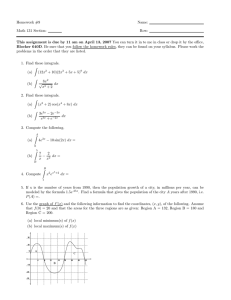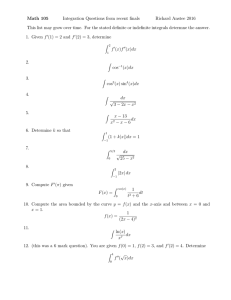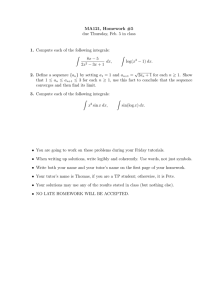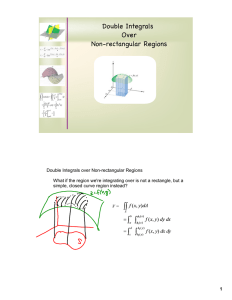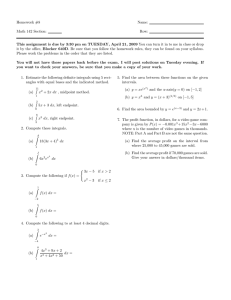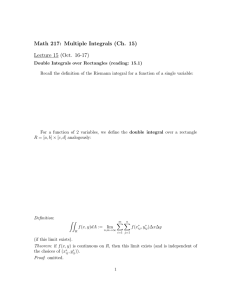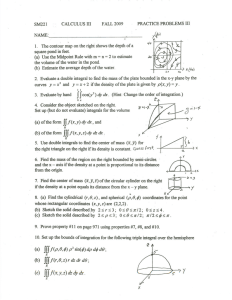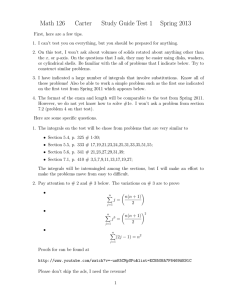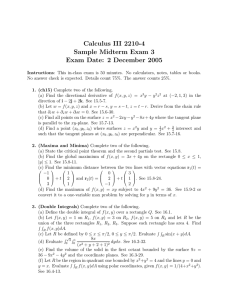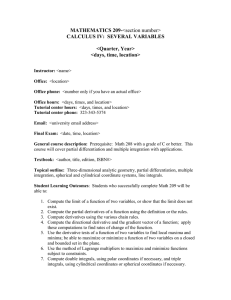Lecture 16 (Oct. 22)
advertisement
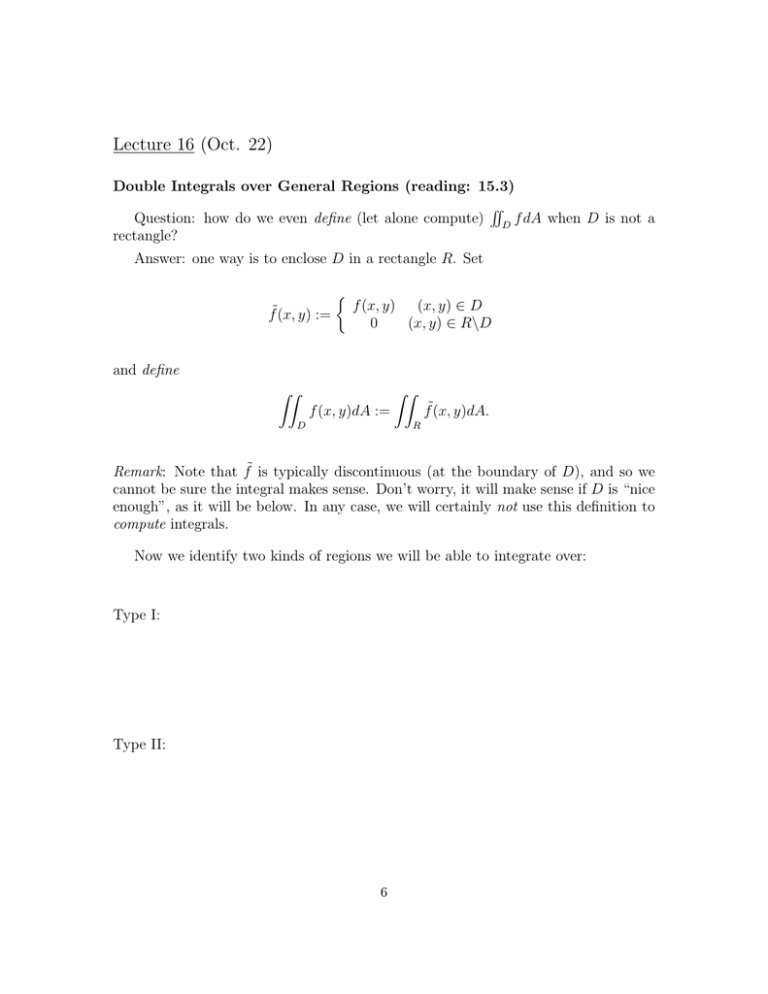
Lecture 16 (Oct. 22)
Double Integrals over General Regions (reading: 15.3)
RR
Question: how do we even define (let alone compute) D f dA when D is not a
rectangle?
Answer: one way is to enclose D in a rectangle R. Set
f˜(x, y) :=
⇢
f (x, y) (x, y) 2 D
0
(x, y) 2 R\D
and define
ZZ
f (x, y)dA :=
D
ZZ
f˜(x, y)dA.
R
Remark: Note that f˜ is typically discontinuous (at the boundary of D), and so we
cannot be sure the integral makes sense. Don’t worry, it will make sense if D is “nice
enough”, as it will be below. In any case, we will certainly not use this definition to
compute integrals.
Now we identify two kinds of regions we will be able to integrate over:
Type I:
Type II:
6
If f (x, y) is continuous on a region
D = {(x, y) | a x b, g1 (x) y g2 (x)}
of Type I, then
ZZ
f (x, y)dA =
D
Z b "Z
a
g2 (x)
#
f (x, y)dy dx.
g1 (x)
Similarly, if f (x, y) is continuous on a region
D = {(x, y) | c y d, h1 (y) x h2 (y)}
of Type II, then
ZZ
RR
Example: Find D (y 2
and x = 3 2y 2 .
f (x, y)dA =
D
Z
d
c
"Z
h2 (y)
#
f (x, y)dx dy.
h1 (y)
x)dA where D is the region bounded by the parabolas x = y 2
7
Example: find the volume bounded by the planes x = 0, y = 0, z = 0, and x+y+z = 1.
Example: Compute I =
R1R3
0
3y
2
ex dxdy.
8
Some basic properties of double integrals:
• for functions f and g,
ZZ
ZZ
[f + g]dA =
D
f dA +
D
ZZ
gdA
D
• for a function f and a constant c
ZZ
• if f (x, y)
cf dA = c
D
ZZ
f dA
D
g(x, y) for all (x, y) 2 D, then
ZZ
ZZ
f dA
D
gdA
D
• if D = D1 [ D2 , and D1 and D2 don’t overlap (except possibly at their boundaries), then
ZZ
ZZ
ZZ
f dA =
f dA +
f dA
D
•
ZZ
D1
D2
1dA = A(D) (:= area(D))
D
• if m f (x, y) M for all (x, y) 2 D, then
mA(D)
ZZ
D
9
f dA M A(D).
